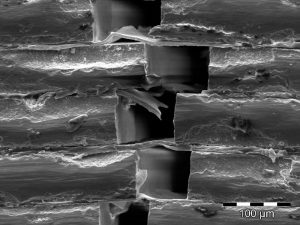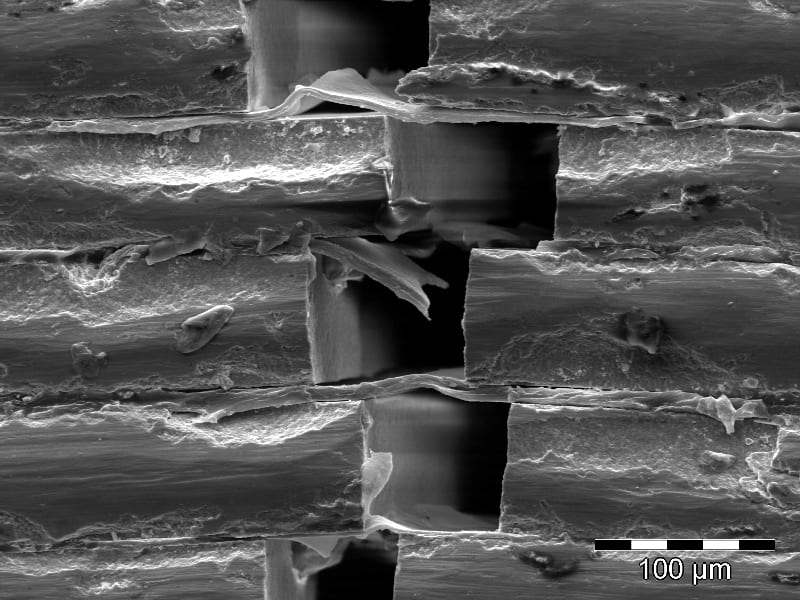 Advanced ceramics feature outstanding hardness, chemical and temperature resistance but a poor mechanical reliability due to their flaw sensitivity and potential catastrophic failure. Strong and tough layered materials in nature, such as shell of nacre and bone, serve as a model for overcoming the inherent brittleness of ceramics.
Advanced ceramics feature outstanding hardness, chemical and temperature resistance but a poor mechanical reliability due to their flaw sensitivity and potential catastrophic failure. Strong and tough layered materials in nature, such as shell of nacre and bone, serve as a model for overcoming the inherent brittleness of ceramics.
The feasibility of designing artificial bioinspired ceramic composites with very high crack resistance has been demonstrated by University of Bremen scientists, who bounded zirconium oxide sheets (70 µm thickness) with only a few micrometers thin adhesive layers. The small amount of organic adhesive (about 5.8 vol. %) provides the composite with a crack resistance exceeding 18 MPam1/2, which is about four times as high as that of the basic ceramic material. Toughening mechanisms such as large deformation enabled by shearing through the adhesive layers, crack arrest, crack deflection, crack bridging and pull-out of ceramic sheets are identified in the composite. Their effect is to impede the crack propagation and to prevent catastrophic fracture. In addition to the improved crack resistance a favourable stiffness and a bending strength of the composite are achieved.
The approach provides good opportunities to tailor the mechanical performance of such laminated composites in terms of stiffness, strength and fracture toughness by adjusting the adhesive properties and the thickness of the layers as design parameters.

















